Go Here to Read this Fast! The best Stardew Valley mods
Originally appeared here:
The best Stardew Valley mods
Go Here to Read this Fast! The best Stardew Valley mods
Originally appeared here:
The best Stardew Valley mods
Threads is giving users more control over who can quote their posts (as in, reposting with commentary). If you don’t want just anyone to be able to quote your posts, you now have the option to allow only people you follow to do so. Or, you can make it so no one can quote your posts at all. Head of Instagram Adam Mosseri announced the update this weekend, saying he hopes it will “help keep Threads a more positive place.” The platform tested the feature among a group of Threads users last month, but it’s now rolling out to everyone.
Threads, which now has over 150 million monthly users, has been slowly adding more features to improve safety and the overall user experience, borrowing some tools from Instagram. Last month, it introduced the Hidden Words feature, so users can designate certain terms that they want to be filtered out of their feeds. Threads also recently started testing options for archiving posts, either manually or automatically after a chosen expiration date.
This article originally appeared on Engadget at https://www.engadget.com/threads-now-lets-you-control-who-can-quote-your-posts-184754374.html?src=rss
Go Here to Read this Fast! Threads now lets you control who can quote your posts
Originally appeared here:
Threads now lets you control who can quote your posts
Parrots are innately social creatures. In captivity, where they typically don’t have a flock to interact with, that can present some real challenges for keeping them happy and healthy. But recent research suggests technology may be able to help them meet more of their social needs. A new (very small) study led by researchers at the University of Glasgow and Northeastern University compared parrots’ responses when given the option to video chat with other birds via Meta’s Messenger versus watching pre-recorded videos. And it seems they’ve got a preference for real-time conversations.
The research builds on findings from a series of small studies over the last few years, including one in which the team trained pet parrots to make video calls to each other (with human assistance) and another where they were taught to play tablet games. In the latest, nine parrot owners were given tablets to set up for their pets, who were then observed over a period of six months. During that time, the parrots — who’d been introduced to each other at the beginning over video chat — were able to engage in calls amongst themselves of up to three hours long over a total of 12 sessions. Half of these sessions featured pre-recorded videos, while the other half were live Messenger video chats.
Their caregivers, who recorded the sessions, reported that the birds seemed more engaged during the live interactions. They initiated more calls in those scenarios, and spent more time on average engaging with the birds on the other end.
In each session, the parrots were allowed to make up to two calls, and the researchers found that those chatting over Messenger hit this limit 46 percent of the time, compared to almost half that when they were watching pre-recorded videos. Overall, they spent a combined 561 minutes video-chatting on Messenger compared to just 142 minutes watching the pre-recorded videos.
“The appearance of ‘liveness’ really did seem to make a difference to the parrots’ engagement with their screens,” said Dr. Ilyena Hirskyj-Douglas, though noting that further study would be needed before definite conclusions can be drawn. “Their behavior while interacting with another live bird often reflected behaviors they would engage in with other parrots in real life, which wasn’t the case in the pre-recorded sessions.” Still, the caregivers mostly reported that the live and pre-recorded calls both seemed to have a positive impact on the birds.
“The internet holds a great deal of potential for giving animals agency to interact with each other in new ways, but the systems we build to help them do that need to be designed around their specific needs and physical and mental abilities,” said Dr. Hirskyj-Douglas. “Studies like this could help to lay the foundations of a truly animal-centered internet.”
This article originally appeared on Engadget at https://www.engadget.com/parrots-in-captivity-seem-to-enjoy-video-chatting-with-their-friends-on-messenger-165911437.html?src=rss
Originally appeared here:
Parrots in captivity seem to enjoy video-chatting with their friends on Messenger
Go Here to Read this Fast! Buy a Costco membership for just $20 with this deal
Originally appeared here:
Buy a Costco membership for just $20 with this deal
Go Here to Read this Fast! The best Star Wars shows on Disney+
Originally appeared here:
The best Star Wars shows on Disney+
Go Here to Read this Fast! Huge Google Pixel 8a leak includes all the predicted specs – and a price
Originally appeared here:
Huge Google Pixel 8a leak includes all the predicted specs – and a price
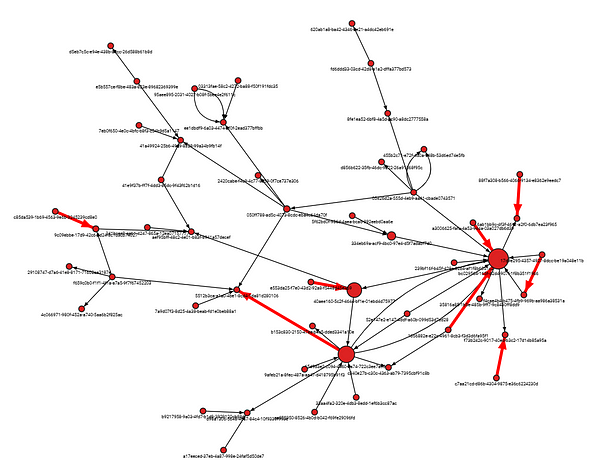
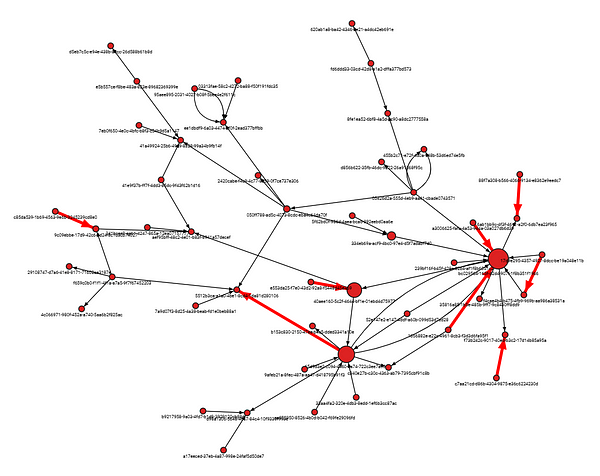
Get yourself set up in 5 mins with a graph DB and an interactive visualization, with all the code to do it written for you.
Originally appeared here:
Enhance Your Network with the Power of a Graph DB
Go Here to Read this Fast! Enhance Your Network with the Power of a Graph DB
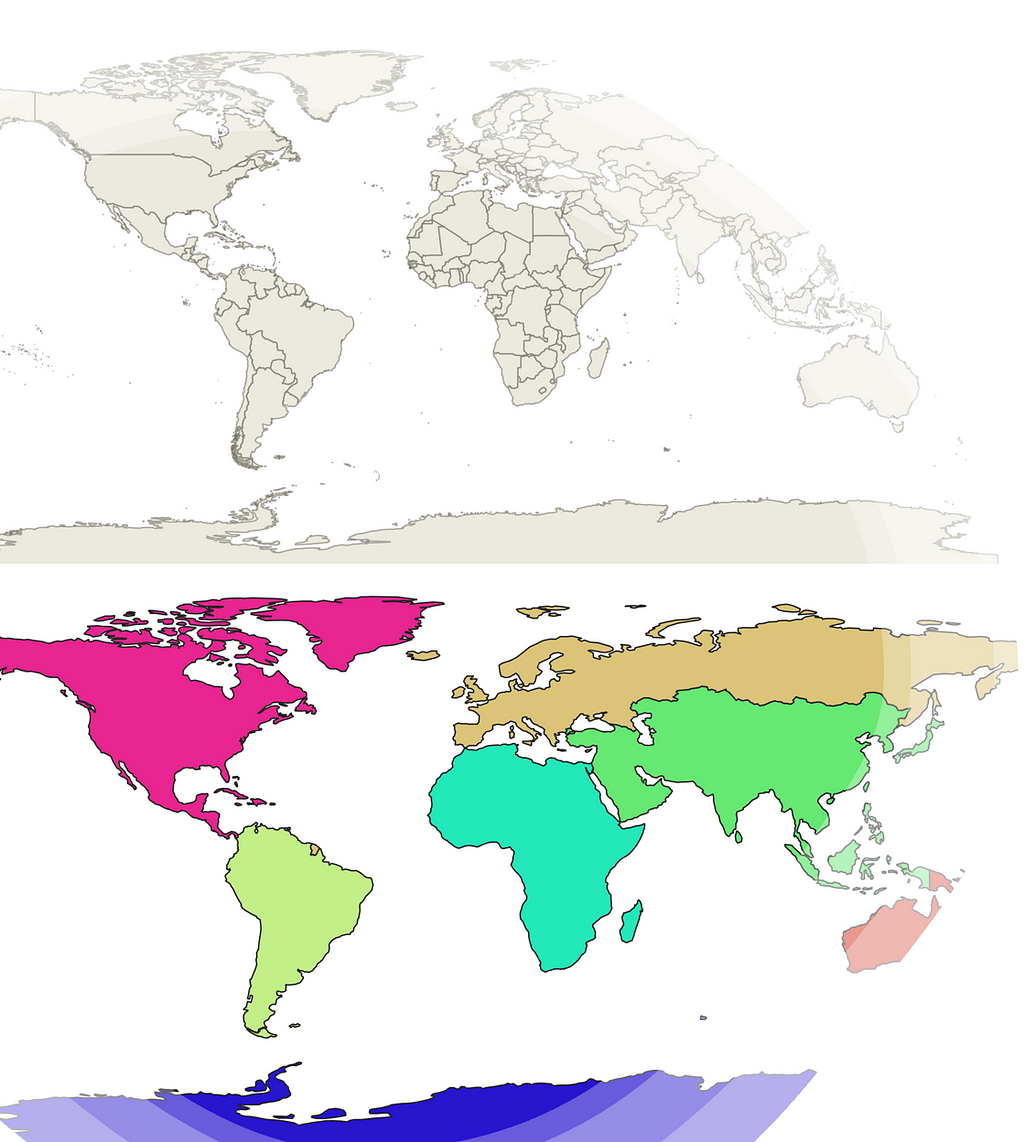
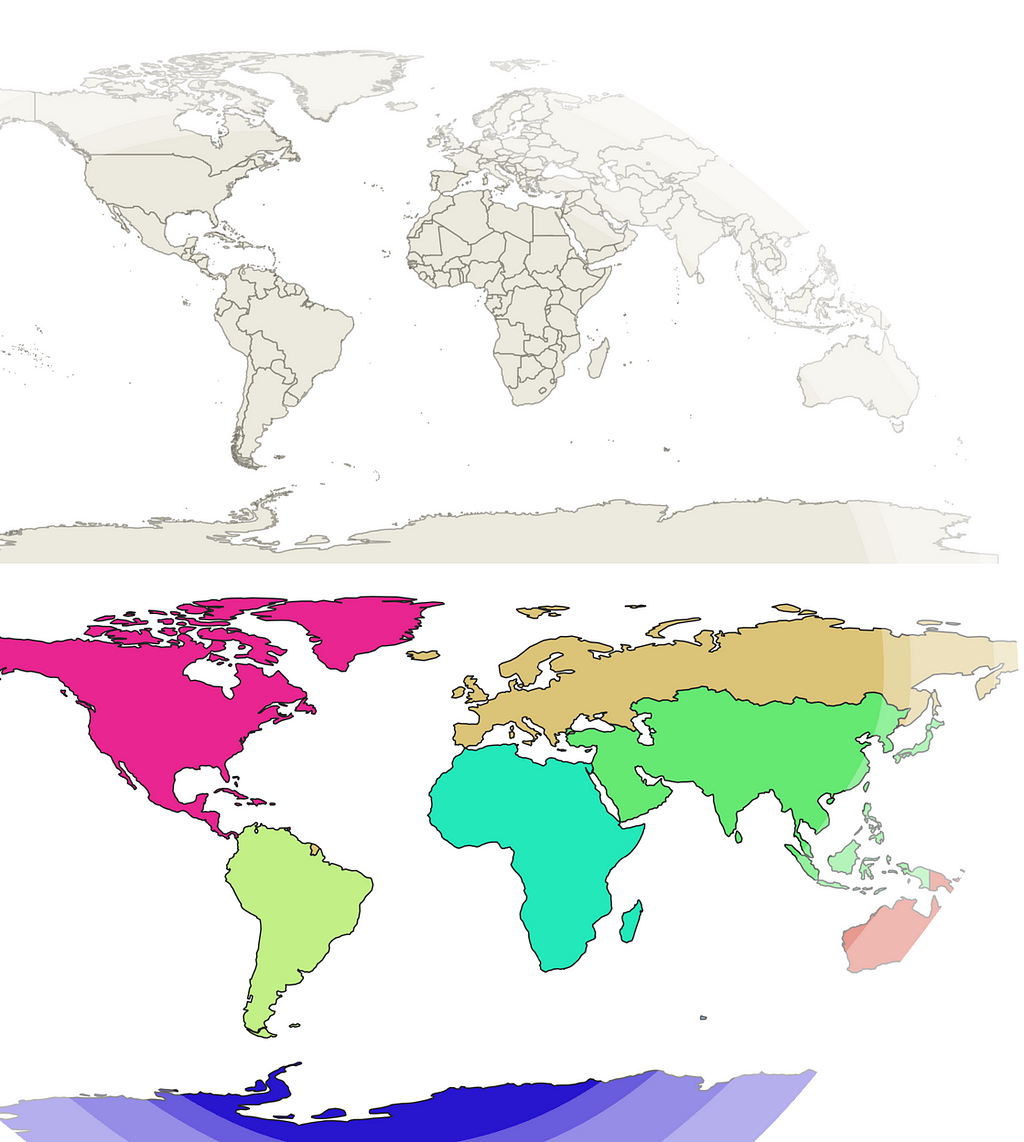
Recently, for one of my projects, I had to define the composition of countries in a region, make the region distinct, and highlight it on the map of a continent. Let’s take an example of the South Asia region in Asia. The South Asia region is comprised of eight countries: Afghanistan, Bangladesh, Bhutan, India, Maldives, Nepal, Pakistan and Sri Lanka. From the map of Asia, I wanted to clip off the South Asia region and highlight it distinctly in the continental map. Furthermore, I wanted to go one step ahead and dissolve the boundaries of the countries in the region so that the region could be demonstrated as a single unit.
I was able to achieve this using both Quantum-GIS (QGIS) and geopandas package in Python. In this process, I utilized the clipping feature which I was already familiar with, and I learned about the dissolve feature which I found very fascinating. In this post, I am going to share my learning about these features and how I achieved my objectives. Let’s get started.

In an empty QGIS project, by typing world in the coordinate space in the bottom of the page, I could call an in-built map of the world with administrative boundaries of all the countries as shown below.
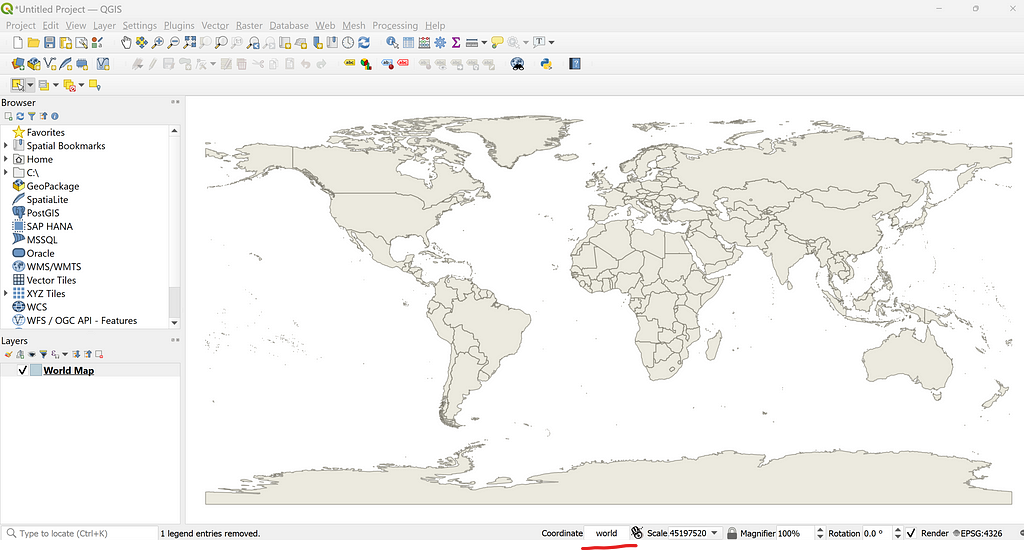
Next, by using the select feature, I selected the 8 countries of South Asia as highlighted in the map below. QGIS offers the option to select countries by hand, by polygon, by radius, and by individually selecting or deselecting countries with a mouse click.
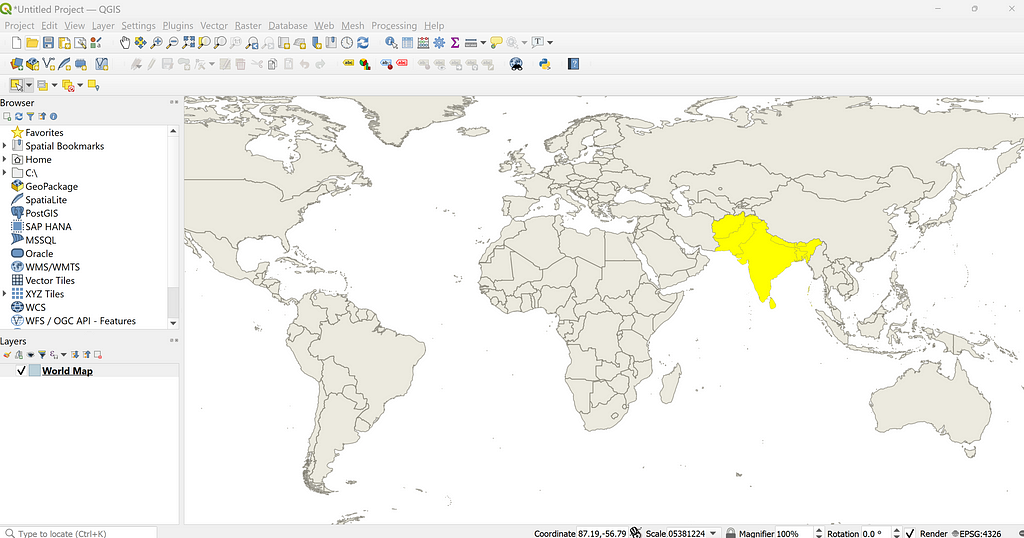
Clipping these countries off of the world map is straightforward in QGIS. One needs to go to Vector in the menu-> Select Geoprocessing tools -> Select Clip. In the options, I ticked on the check box for the Selected features only in the Input layer and ran the process.
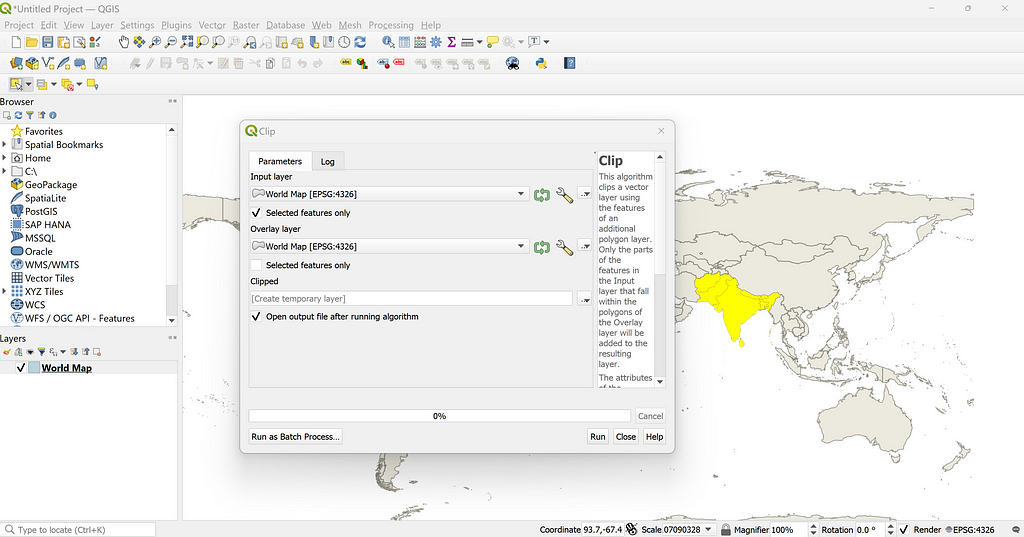
The clipping action was completed in 7.24 seconds alone and I got a new layer called “Clipped”. This is depicted by the brown color in the screenshot below. By going to Properties of the layer, one can use different coloring options in QGIS in the Symbology option.
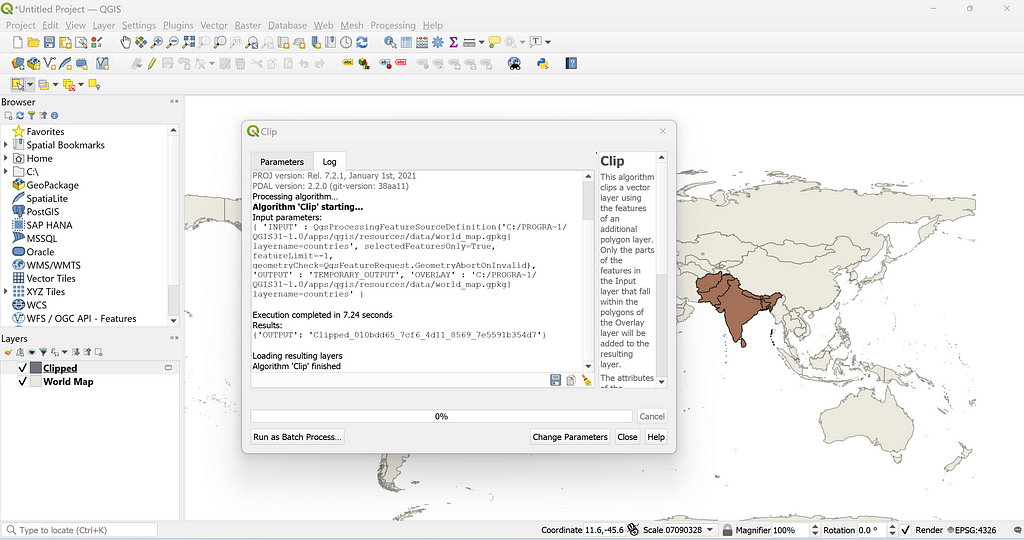
Next, I wanted to dissolve the boundaries between countries in South Asia. For this, I selected all the countries in South Asia. I went to the Vector Menu -> Select Geoprocessing Tools ->Dissolve. Similar to the previous step, I selected “Selected featured only” in the input layer and ran the algorithm which took just 0.08 seconds. A new layer called “Dissolved” was created where the administrative boundaries between countries were dissolved and appeared as a single unit as shown below:
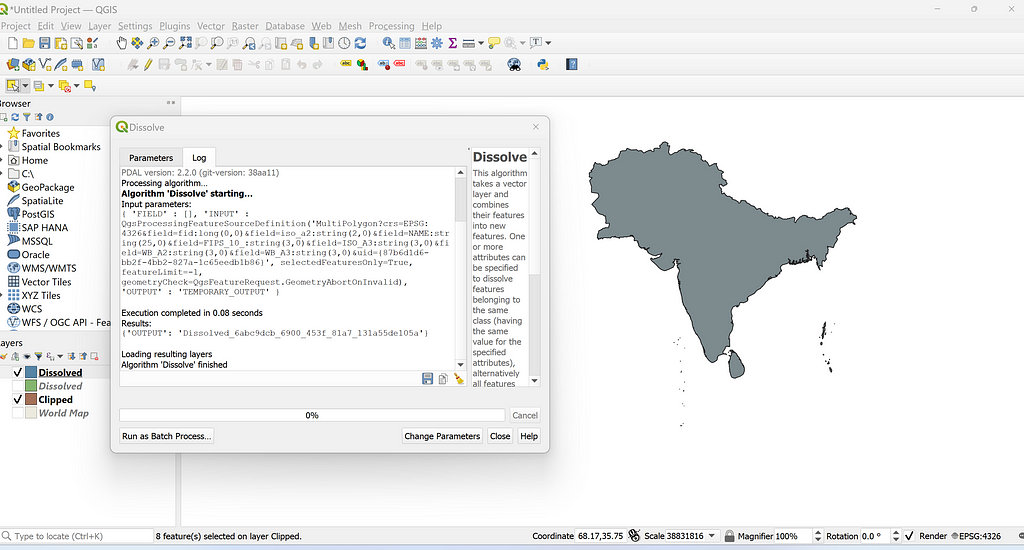
Visualizing both the world layer and Dissolved layer at the same time looks as shown below:
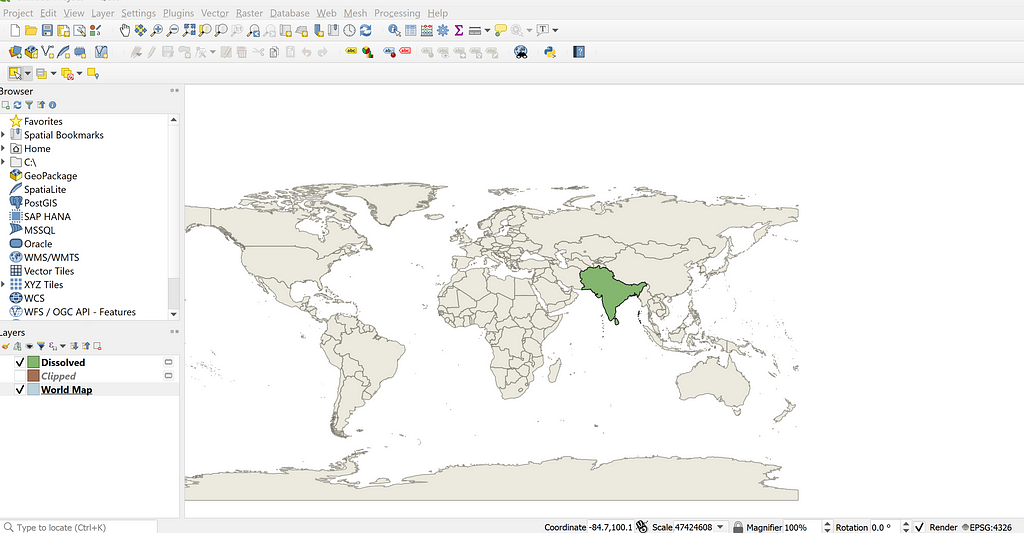
In this section, I am going to demonstrate how I could the same objective in Python using the geopandas package.
In the first step, I read the in-built dataset of the world map within the geopandas package. It contains the vector data of the world with the administative boundaries of all counntries. This is obtained from the Natural Earth dataset, which is free to use.
import pandas as pd
import geopandas as gpd
import matplotlib.pyplot as plt
import numpy as np
world = gpd.read_file(gpd.datasets.get_path('naturalearth_lowres'))
world.plot(color = "lightgrey")
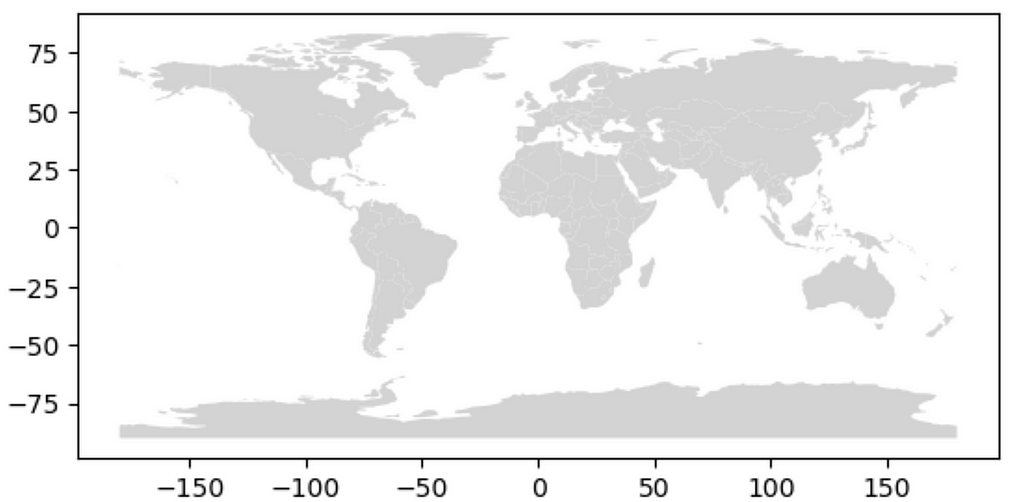
In my very first post, I demonstrated how it is possible to clip off a custom Polygon geometry as a mask from the original geopandas dataframe or layer. However, for simplicity, I just used the filter options to obtain the required layers for Asia and South Asia.
asia = world[world.continent == "Asia"]
asia.plot(color = "lightgrey")
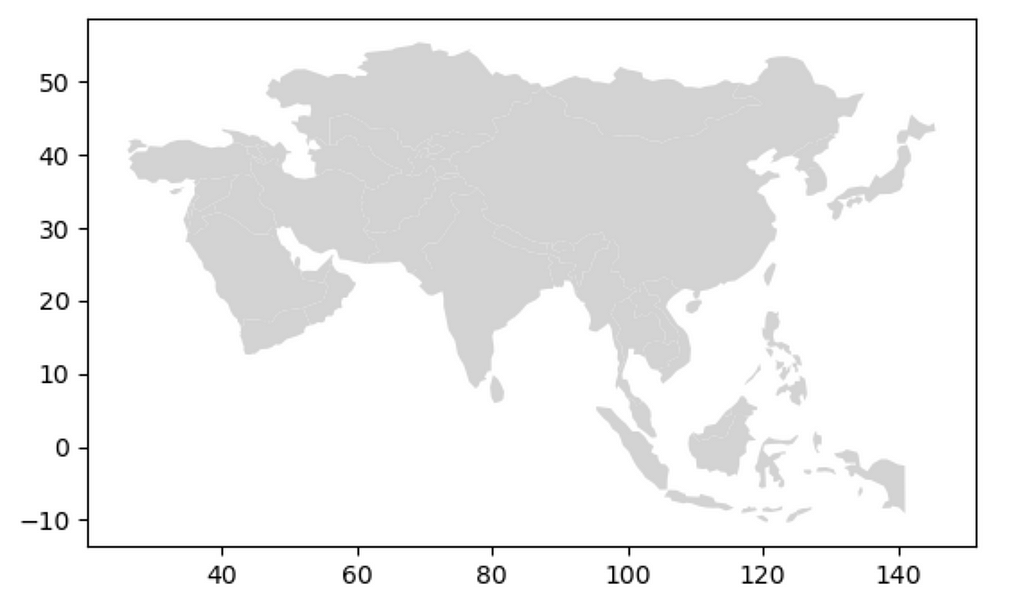
To filter the South Asia region, I used a list containing the name of each country as a reference.
south_asia_countries = ["Afghanistan", "Bangladesh", "Bhutan", "India",
"Maldives", "Nepal", "Pakistan", "Sri Lanka"]
south_asia = asia[asia.name.isin(south_asia_countries)]
south_asia.plot()
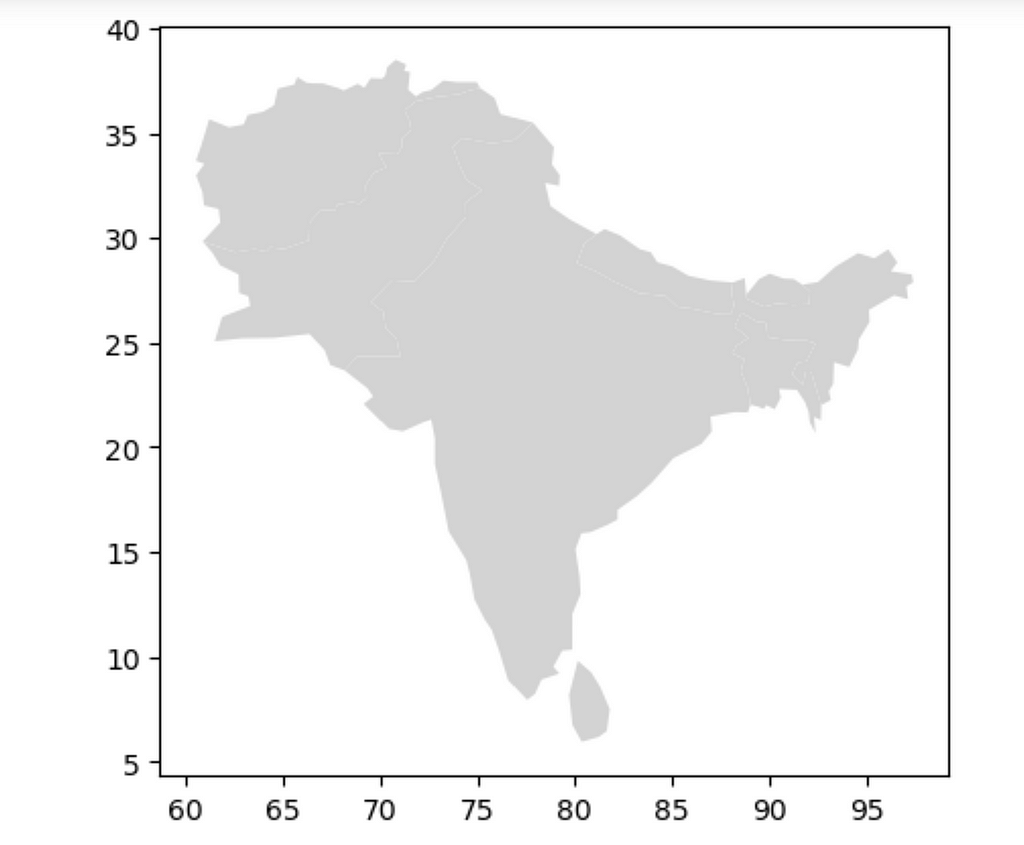
To dissolve the boundaries between countries in South Asia, I used the dissolve feature in geopandas. I passed None as an argument, and specified parameters to apply certain aggregate functions, in which the population and GDP in the resulting dissolved dataframe would sum up the population and GDP in all countries in South Asia. I am yet to figure out how the aggregate function can also be applied in QGIS.
south_asia_dissolved = south_asia.dissolve(by = None,
aggfunc = {"pop_est":"sum",
"gdp_md_est":"sum"})
south_asia_dissolved.plot(color = "lightgrey"
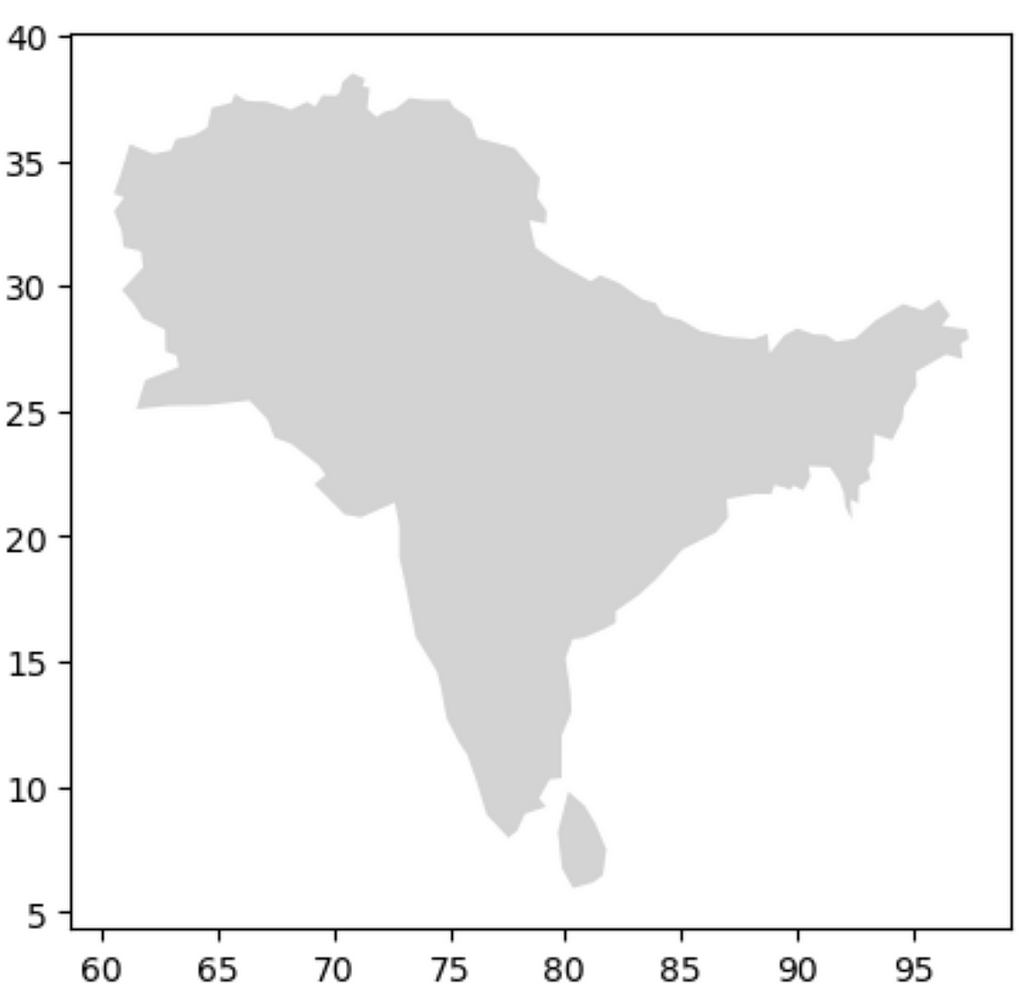
Dissolving boundaries between countries within a continent in the world
Using the same procedure as above, I wanted to dissolve the boundaries between countries within a continent and show different continents distinct from each other in a world map based on the number of countries in each continent.
For this purpose, first I added a new column called num_countries in the world geodataframe containing 1 as a value. Then I dissolved the world map using the continent column as a reference.
world["num_countries"] = 1
continents_dissolved = world.dissolve(by = "continent",
aggfunc = {"pop_est":"sum",
"gdp_md_est":"sum",
"num_countries":"count"}).reset_index()
continents_dissolved
I used the aggregate function to sum up the population and GDP in all countries in the continent and count the number of countries in each continent. The resulting geodataframe continents_dissolved look as shown:

We see that Asia has the largest population and GDP of all continents. Similarly, we see that Africa has the most countries (51) followed by Asia (47), Europe (39), North America (18), South America (13), and Oceania (7). Antarctica and Seven seas (open ocean) are also regarded as continents in this dataset.
Finally, I wanted to plot the world map highlighting the number of countries in each continent with the help of a color map. I achieved this using the following code:
map = continents_dissolved.plot(column = "num_countries",
cmap = "Greens")
# Get the current axes
ax = plt.gca()
# Add a horizontal colorbar
cbar = plt.colorbar(map.get_children()[0],
ax=ax,
orientation='horizontal',
aspect = 30 #control the width of color bar. higher value= lower width.
)
# Set a label for the colorbar
cbar.set_label('Number of Countries')
plt.title("Continents of the world based on number of countries")
plt.savefig("Continents dissolved.jpeg",
bbox_inches = "tight",
dpi = 300)
# Show the plot
plt.show()
The resulting map appears as shown below:
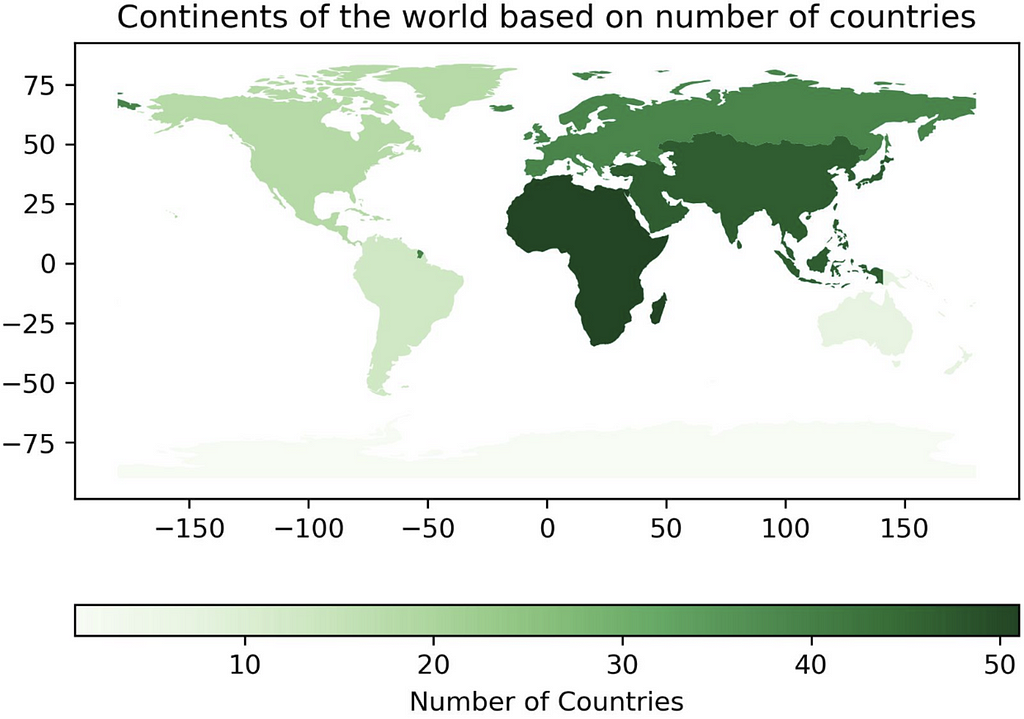
In this post, I described ways to dissolve map boundaries using QGIS and geopandas in Python. In the process, I also explained the clipping process and the possibility of using aggregate function while dissolving the map boundaries in geopandas. These processes could be very useful for the manipulation, processing, and transformation of geographical maps in the form of vector datasets. The code and the QGIS project file for this post are available in this GitHub repository. Thank you for reading!
Dissolving map boundaries in QGIS and Python was originally published in Towards Data Science on Medium, where people are continuing the conversation by highlighting and responding to this story.
Originally appeared here:
Dissolving map boundaries in QGIS and Python
Go Here to Read this Fast! Dissolving map boundaries in QGIS and Python